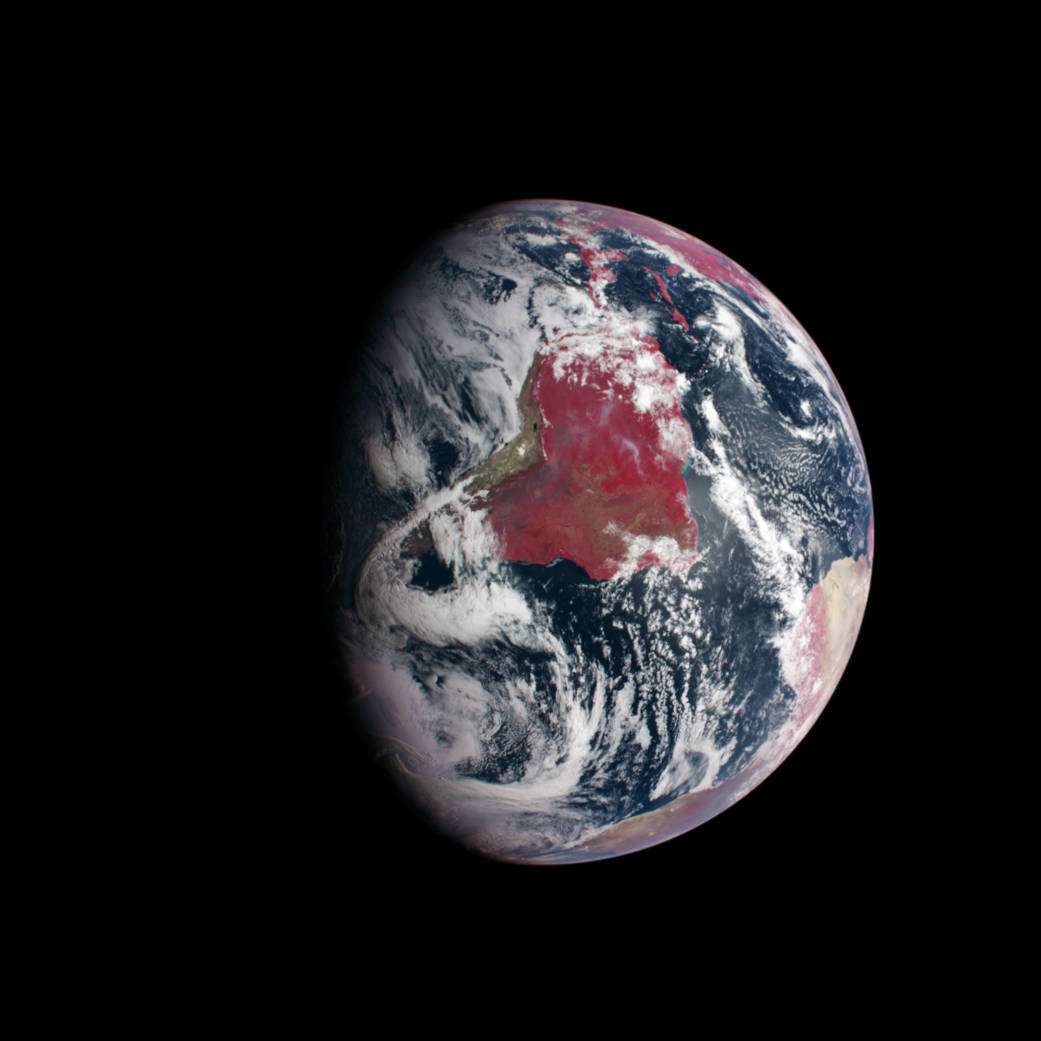On Aug. 3, 2004, NASA’s Mercury Surface, Space Environment, Geochemistry, and Ranging (MESSENGER) spacecraft began a seven-year journey, spiraling through the inner solar system to Mercury. One year after launch, the spacecraft zipped around Earth, getting an orbit correction from Earth’s gravity and getting a chance to test its instruments by observing its home planet.
This image is a view of South America and portions of North America and Africa from the Mercury Dual Imaging System’s wide-angle camera aboard MESSENGER. The wide-angle camera records light at eleven different wavelengths, including visible and infrared light. Combining blue, red, and green light results in a true-color image from the observations. The image substitutes infrared light for blue light in the three-band combination. The resulting image is crisper than the natural color version because our atmosphere scatters blue light. Infrared light, however, passes through the atmosphere with relatively little scattering and allows a clearer view. That wavelength substitution makes plants appear red. Why? Plants reflect near-infrared light more strongly than either red or green, and in this band combination, near-infrared is assigned to look red.
Apart from getting a clearer image, the substitution reveals more information than natural color. Healthy plants reflect more near-infrared light than stressed plants, so bright red indicates dense, growing foliage. For this reason, biologists and ecologists occasionally use infrared cameras to photograph forests.
Image Credit: NASA/Johns Hopkins University Applied Physics Laboratory/Carnegie Institution of Washington
Caption: Holli Riebeek
























